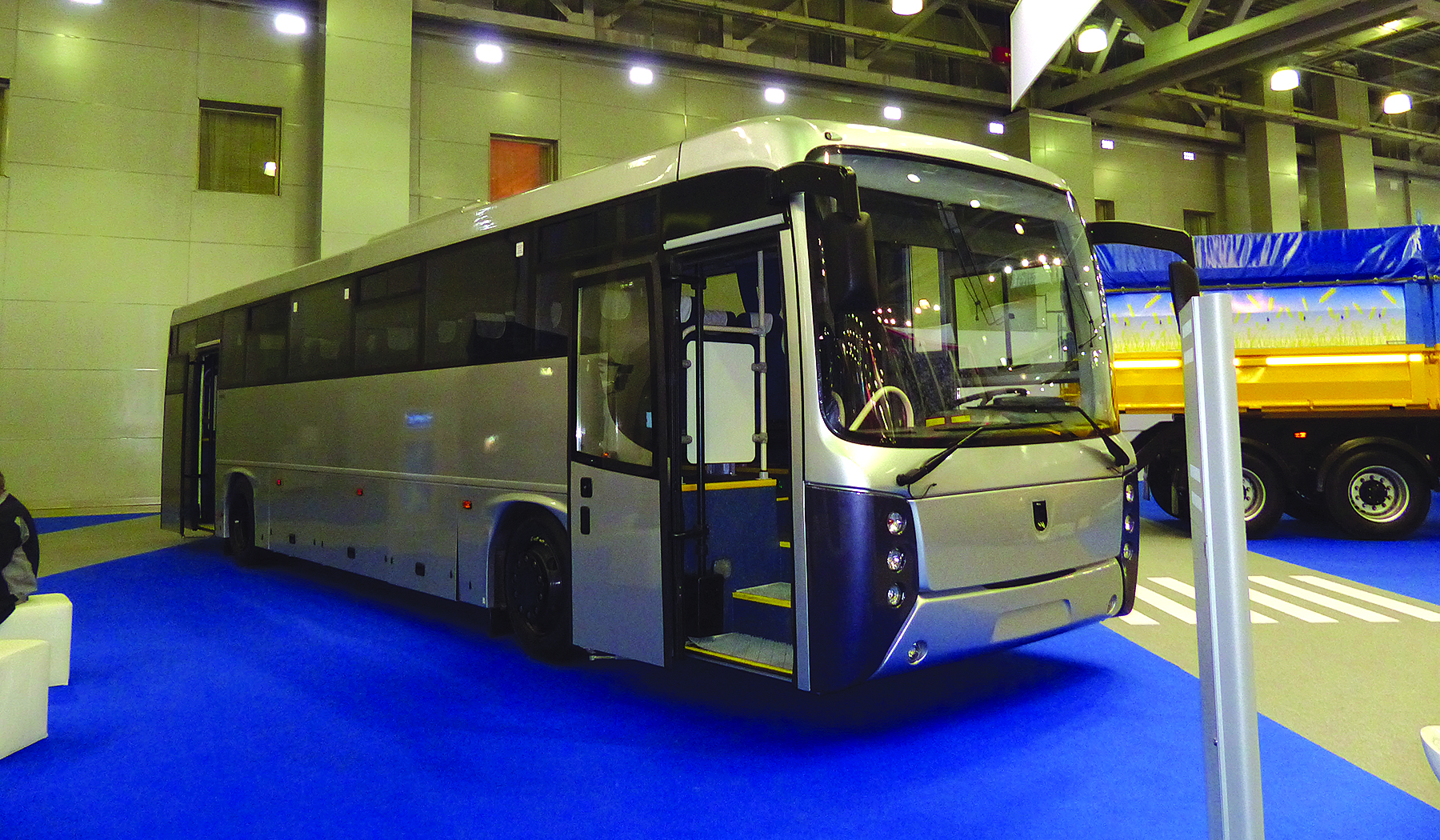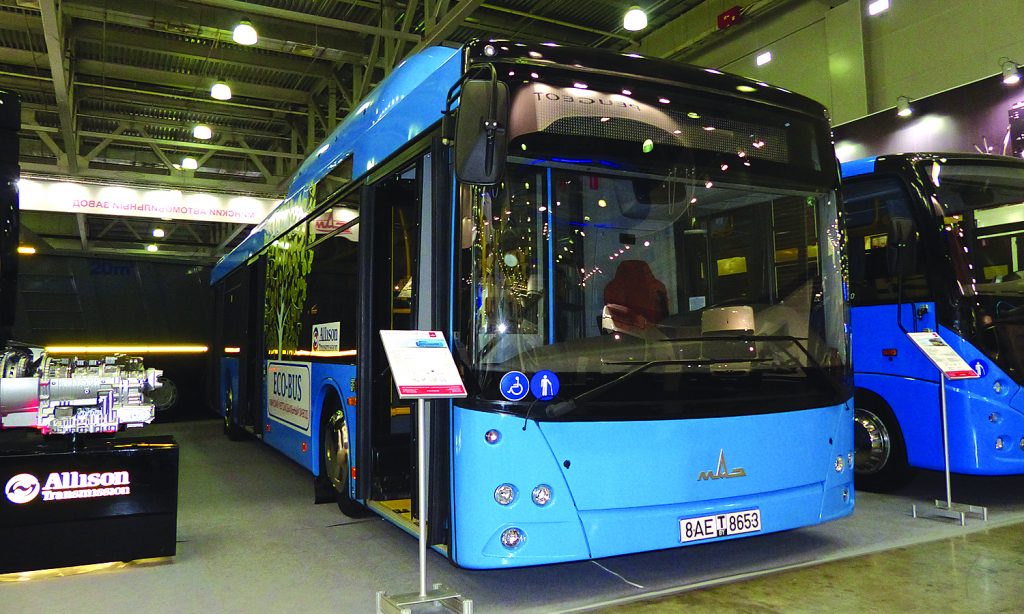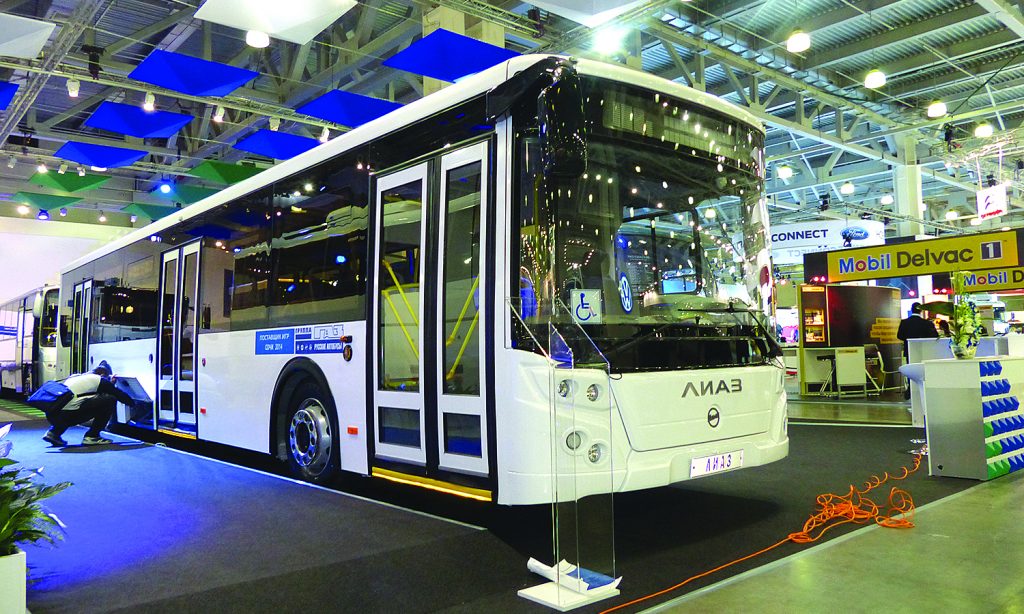
By Doug Jack
While many of you were probably at BusCon in Chicago, I went in a completely different direction to Comtrans in Moscow.
Even in the United Kingdom, some people give you a funny look when you tell them you are going to Russia, as if they are questioning your wisdom. I was travelling with hand luggage, but arrived at a very modern terminal and went from my seat in the aircraft to meeting my driver in 15 minutes. That included a friendly welcome to Russia from the immigration officer. Many of the younger people speak good English, and most people are friendly and courteous. It is always well worth a visit.
Modernizing Russian fleets
Every time I return to Russia, the traffic seems to be even more congested. There is a growing and well-educated middle class, and that has created demand for high-quality cars and multi-purpose vehicles.
The city authorities are responding by investing heavily in public transport, expanding the excellent Metro system and modernizing the fleet with new low-floor diesel buses and trolleybuses. Mosgortrans is currently taking delivery of 2,000 buses from LiAZ, the Likino Bus factory located near Moscow.
Public sector companies in Russia are obliged to buy vehicles built in the country, although there are complaints that they are not as durable as Western products. Corrosion is still a major problem, with many vehicles requiring major rebuilding every few years.
Mosgortrans specifies MAN engines to the latest European emission standards, even though Russia only requires Euro 4 emission limits. Moscow is relatively flat, therefore the MAN engines are compact 6.7 liter units mounted vertically and offset in line behind the rear axle, opposite a third double-width door. ZF of Germany supplies the fully automatic gearboxes and axles.
The authorities are now talking about putting the operation of bus routes out to competitive tender. They are looking at an arrangement similar to London where the transport authority establishes the route network, frequencies, fares and types of vehicles. The authority plans to collect all the revenue and pay contractors an agreed rate per mile on a fixed term contract.
Moscow is talking about permitting contractors to buy buses from Western European manufacturers in order to raise standards and improve service quality. Actually, that is a little misleading. The front-runners are probably Iveco, MAN and Mercedes-Benz with factories in the Czech Republic, Poland and Turkey respectively. The drivetrains are completely Western European, but construction to Western quality standards takes place in countries with much lower labor rates.
If that goes to plan, there will be a great political battle. The largest domestic bus builder is the powerful GAZ Group that has four factories building buses and coaches of various sizes and types, including LiAZ buses. GAZ itself makes minibuses, including the popular Gazelle. Known as mashkrutas. many of these run on fixed routes in the cities (like shared taxis).
At the beginning of this year, Scania and Sweden won an order to supply 709 chassis of different types bodied by GolAZ, the Golitsyno factory of the GAZ Group.
Most of these vehicles are 49 feet long on three axles with a floor height around 33 inches above the ground. A passenger in a wheelchair can be taken on or off the vehicle by a lift that is normally stored behind the stairwell at the second double-width doorway. This is quite a major advance in Russia, which is not the most accessible country for people with disabilities.
Russia is hosting the Winter Olympic Games next February in Sochi on the Black Sea, and is investing billions of dollars on the venues and infrastructure.
Mostransavto, a major bus company in the Moscow region, will operate all the buses and coaches for the Winter Olympics. After the games they will enter service in and around Moscow, substantially modernizing the fleet. Scania is assisting by setting up workshop facilities in Sochi to be manned round-the-clock during the games.
Comtrans
Comtrans took place in the Crocus Expo Centre, a large and modern complex on the outer ring motorway around Moscow. Although trucks dominated the exhibition, I saw quite a number of interesting buses and coaches. Gazprom, the major Russia gas utility, is encouraging city bus fleets to invest in gas-fueled vehicles. Currently, gas runs at about 40 percent of the price of diesel. While demand for gas heating is very high in winter, it drops in summer. Gazprom has targeted the bus industry because it is a potential year-round consumer.
Russia joined the World Trade Organization (WTO) last year. Over time, this should lead to the elimination of tariffs and duties that have until now protected domestic industries. Russia is a major exporter of oil, gas and minerals and is keen to develop that business.
There are already some disputes with WTO. For example, import duties on luxury coaches have gone up, but that is only a very limited sector of the market. Most long distance travel is still done by rail, with an increasing number of air services because of the great distances. Chinese and Korean manufacturers, especially Hyundai, are selling simpler and less expensive coaches in Russia. Their factories are nearer to customers in Siberia than the main factories of the domestic builders.
MAZ, the Minsk Automobile Factory from neighboring Belarus, has a customs union with Russia. MAZ started building buses around 20 years ago to Neoplan designs, but has now developed its own range of low-floor diesel and trolleybuses in various lengths, as well as articulated. A low-floor bus with a Mercedes-Benz CNG engine and an Allison fully automatic gearbox was on exhibit.
Anadolu Isuzu was the only Turkish manufacturer at Comtrans. It displayed three midicoaches and an attractive low-entry midibus.
Daimler owns a minority shareholding in KamAZ, the largest domestic truck builder. Its subsidiary NefAZ makes low-floor city buses and higher floor interurban coaches, and can offer the option of a Cummins CNG engine.
Cummins engines were installed in quite a number of buses and coaches at Comtrans. The smallest units are the 2.8-liter and 3.8-liter ISF engines, built in China and suitable for midibuses. Most of Russia is relatively flat, therefore high power is not a prerequisite. One interesting installation was a CNG engine in a midicoach built by the Kurgan factory of the GAZ Group. It was designed for short interurban routes, therefore the gas tanks were located under the floor. Larger Cummins ISL and ISM engines were installed in King Long and Higer coaches from China.
The largest bus factory in the GAZ Group is at Pavlovo, 400 miles east of Moscow. In an average year they build around 10,000 mid-size buses. Most of them have a very square shape with a front-mounted engine and a relatively high floor. Surprisingly just over half the production is with V8 gasoline engines. The majority of production is for Russia and neighboring countries. However, more than 300 chassis are being delivered this year to Cuba.
Traveling to and from Comtrans was an excellent opportunity to observe vehicles in service. Moscow has introduced some bus priority lanes and, with so many people living in huge apartment blocks outside the city, bus service is very frequent. Most of the old high-floor city buses have disappeared. Buses appeared to be in good condition and free from any dents or scrapes, suggesting that standards of maintenance are good.


